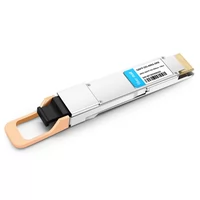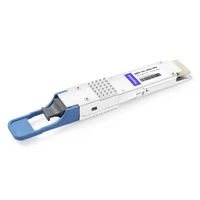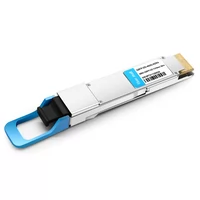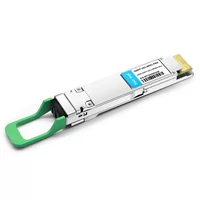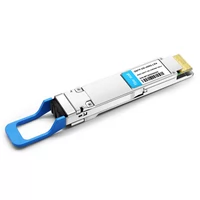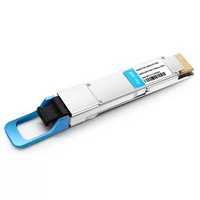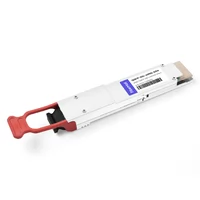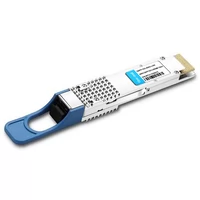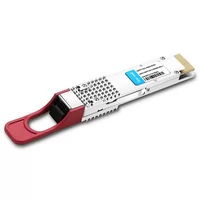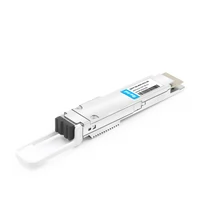The birth of coherent transport has transformed optical transport networks, and its introduction of electronic digital signal processors (DSP) has become a key driver for increasing the capacity of MAN and long-haul WDM networks.
In the past, while wavelength capacity gains were dependent on the speed evolution of light sources, modulators, and detectors, DSP and the associated complex modulation coding they implement have become the primary driver for increasing network capacity.
With optical transmission speeds reaching over 400 Gbit/s per wave, the growing importance of coherent DSP opens up the possibility of significant change for optical suppliers and the industry landscape.
What is DSP? Principle and Composition
DSP is digital signal processing technology, DSP chip refers to the chip that can implement digital signal processing technology, is a fast and powerful microprocessor, unique in that it can instantly process information. DSP chip’s internal Harvard structure with separate program and data, with a special hardware multiplier, can be used to quickly implement a variety of digital signal processing algorithms. In the context of today’s digital era, DSP has become a fundamental device for communication, computers, consumer electronics, and other fields.
DSP module principle
The DSP module processes the two polarization electrical signals obtained from the output of the coherent receiver and completes the recovery of the original signal after the processing of the functional modules as shown below. The main task of DSP is to sample the analog signal, quantize it, convert the analog signal to a digital signal, remove the chromatic dispersion and polarization mode dispersion in the fiber optic link, complete the carrier frequency offset estimation, carrier phase recovery, and other functions, DSP and full analog architecture analysis.
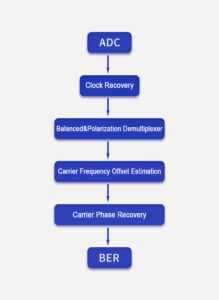
DSP Module Functional Block Diagram
DSP Module Composition
Clock synchronization and ADC module
Digital clocks are generally recovered using interpolation filters, as the symbol clock (T) and the ADC sampling clock (Ts) are independent of each other, so in order to make the transmit symbol clock (T) and the adjusted receiver sampling clock (Ti) synchronization, it is necessary to modulate the receiver’s symbol sampling moment.
The use of interpolation filters as the main algorithm is a more mature recovery of the digital clock technology, in order to make the digital receiver output the correct adoption model (synchronized with the symbol clock), that is, adjust the receiver sampling moment, usually using open-loop structure symbol clock synchronization algorithm.
Equalization and polarization demultiplexing module
In order to deal with the interference between polarized signals and the non-idealities of the channel, it is necessary to apply polarization demultiplexing and equalization techniques for signal processing. First, the polarization demultiplexing function is implemented using structured filters, which are designed to counteract the interference between polarized signals, which is caused by a certain degree of deflection generated by the individual polarized signals during transmission. In addition, the adaptive equalization technique is designed to deal with damages that occur during fiber optic link transmission due to non-ideal channel characteristics, and linear damage mainly caused by first-order polarization mode dispersion, and fiber.
Frequency offset estimation and phase retrieval module
In order to demodulate the received signal correctly, the frequency offset estimation of the carrier signal needs to be done. The main reason is that the received signal will have a frequency remoteness from the local oscillation source in the coherent optical receiver due to the absence of feedback control of the local oscillation signal, so the method of frequency offset estimation must be implemented in the receiver.
Why DSP technology is used for coherent optical communication?
The combination of coherent detection and DSP technology allows carrier phase synchronization and polarization tracking in the electric domain, clearing two major obstacles to traditional coherent reception; coherent receivers based on DSP have a simple structure and hardware transparency, which can compensate for various transmission damages in the electric domain, simplify transmission links and reduce transmission costs; and support M-ray modulation and polarization multiplexing to achieve high spectral efficiency transmission.
What are the disadvantages of using DSP technology and how to solve them?
Since DSP introduces DAC/ADC and algorithms, its power consumption must be higher than traditional CDR chips based on analog technology. This is a huge challenge for both the module and future switch panels’ thermal design. Therefore, its power management and low-power design techniques have also become a hot topic of current research. In actual operation, the system is idle or low load during a significant portion of the operation time, and the extra energy consumed by the system during these time periods can be avoided by low-power design measures.
The main entry point of low-power design is to achieve low-power operation of the system by reasonably adjusting down the performance of the system according to the actual load of the system operation, under the premise of ensuring the completion of processing tasks as required. To achieve this goal, it is necessary to implement a reliable low-performance operation mechanism in the system, effectively monitor each component of the system and adopt a reasonable strategy to manage the system power consumption.
Related Products:
-
 NVIDIA(Mellanox) QMMA1U00-WS Compatible 400G QSFP-DD SR8 PAM4 850nm 100m MTP/MPO OM3 FEC Optical Transceiver Module
$149.00
NVIDIA(Mellanox) QMMA1U00-WS Compatible 400G QSFP-DD SR8 PAM4 850nm 100m MTP/MPO OM3 FEC Optical Transceiver Module
$149.00
-
 Cisco QDD-400G-DR4-S Compatible 400G QSFP-DD DR4 PAM4 1310nm 500m MTP/MPO SMF FEC Optical Transceiver Module
$400.00
Cisco QDD-400G-DR4-S Compatible 400G QSFP-DD DR4 PAM4 1310nm 500m MTP/MPO SMF FEC Optical Transceiver Module
$400.00
-
 Cisco QDD-4X100G-FR-S Compatible 400G QSFP-DD XDR4 PAM4 1310nm 2km MTP/MPO-12 SMF FEC Optical Transceiver Module
$580.00
Cisco QDD-4X100G-FR-S Compatible 400G QSFP-DD XDR4 PAM4 1310nm 2km MTP/MPO-12 SMF FEC Optical Transceiver Module
$580.00
-
 Cisco QDD-400G-FR4-S Compatible 400G QSFP-DD FR4 PAM4 CWDM4 2km LC SMF FEC Optical Transceiver Module
$500.00
Cisco QDD-400G-FR4-S Compatible 400G QSFP-DD FR4 PAM4 CWDM4 2km LC SMF FEC Optical Transceiver Module
$500.00
-
 Cisco QDD-400G-LR4-S Compatible 400G QSFP-DD LR4 PAM4 CWDM4 10km LC SMF FEC Optical Transceiver Module
$600.00
Cisco QDD-400G-LR4-S Compatible 400G QSFP-DD LR4 PAM4 CWDM4 10km LC SMF FEC Optical Transceiver Module
$600.00
-
 Cisco QDD-4X100G-LR-S Compatible 400G QSFP-DD PLR4 PAM4 1310nm 10km MTP/MPO-12 SMF FEC Optical Transceiver Module
$1000.00
Cisco QDD-4X100G-LR-S Compatible 400G QSFP-DD PLR4 PAM4 1310nm 10km MTP/MPO-12 SMF FEC Optical Transceiver Module
$1000.00
-
 QSFP-DD-400G-ER4 400G QSFP-DD ER4 PAM4 LWDM4 40km LC SMF without FEC Optical Transceiver Module
$3500.00
QSFP-DD-400G-ER4 400G QSFP-DD ER4 PAM4 LWDM4 40km LC SMF without FEC Optical Transceiver Module
$3500.00
-
 Cisco QDD-400G-LR8-S Compatible 400G QSFP-DD LR8 PAM4 LWDM8 10km LC SMF FEC Optical Transceiver Module
$2500.00
Cisco QDD-400G-LR8-S Compatible 400G QSFP-DD LR8 PAM4 LWDM8 10km LC SMF FEC Optical Transceiver Module
$2500.00
-
 QSFP-DD-400G-ER8 400G QSFP-DD ER8 PAM4 LWDM8 40km LC SMF FEC Optical Transceiver Module
$3800.00
QSFP-DD-400G-ER8 400G QSFP-DD ER8 PAM4 LWDM8 40km LC SMF FEC Optical Transceiver Module
$3800.00
-
 QSFP-DD-400G-DCO-ZR 400G Coherent QSFP-DD DCO C-band Tunable Optical Transceiver Module
$6000.00
QSFP-DD-400G-DCO-ZR 400G Coherent QSFP-DD DCO C-band Tunable Optical Transceiver Module
$6000.00

